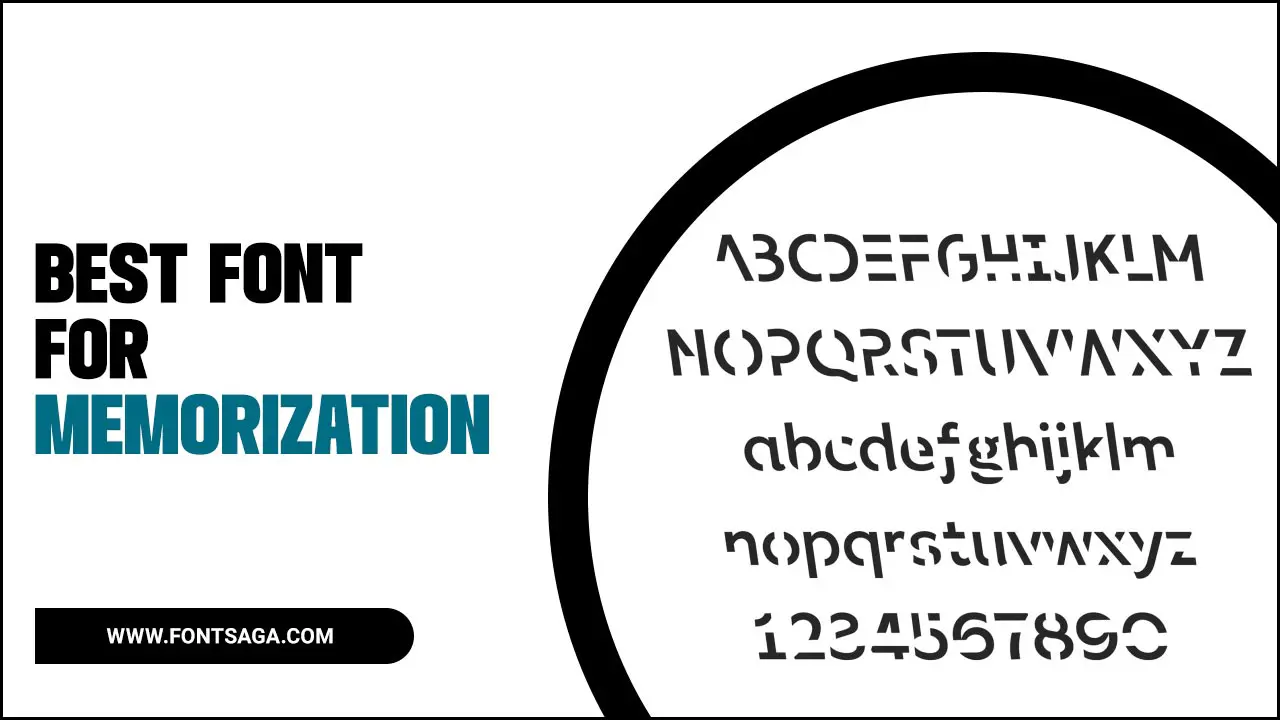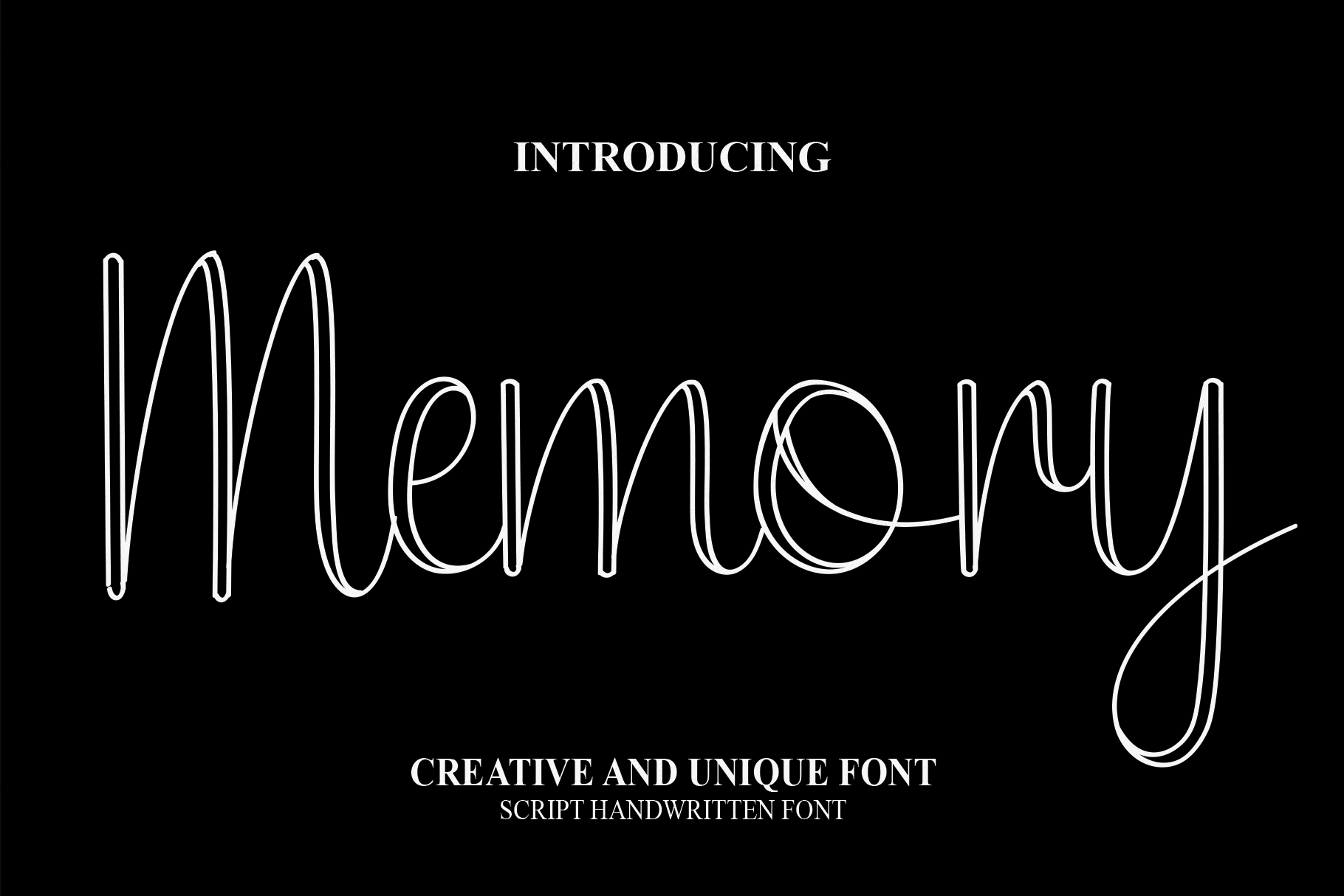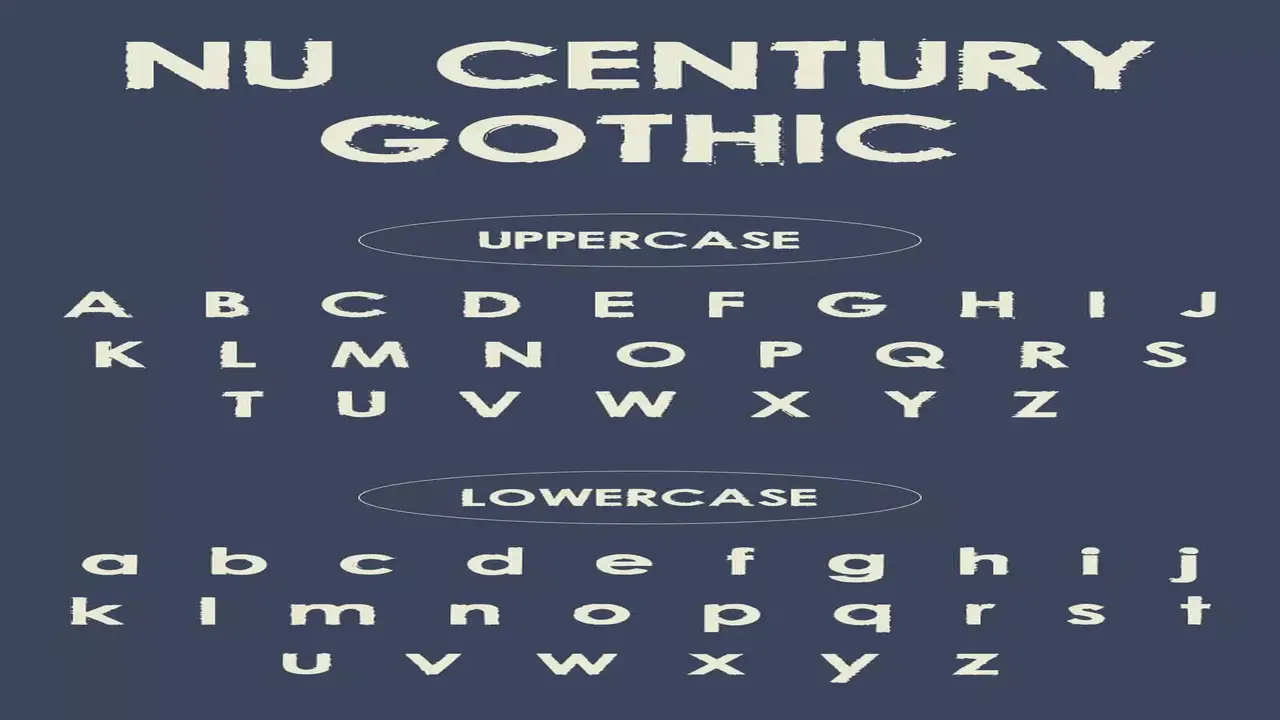Memorization has become a lost art in our digital age. With instant access to information at our fingertips, retaining knowledge has become less of a priority. Everything can impact your ability to retain information, from the content you’re studying to the environment you’re in.
However, there are still many situations where memorizing information is crucial, such as school tests, presentations, or lectures. The font you choose can play an important role in how well you retain information. Believe it or not, different fonts can profoundly affect information processing and memory retention.
Studies have shown that certain fonts are more effective at retaining information than others. We’ll discuss the best font for memorization and explore how it works.

10 Best Font For Memorization

Regarding choosing the best font for memorization, several options have been found to be particularly effective. These fonts are designed to enhance readability and retention, making them ideal for studying, note-taking, and other activities requiring memorization. Here are 10 of the best fonts for memorization:
Serif
People have long regarded serif fonts as the ideal choice for enhancing memorization. People widely recognize fonts like Times New Roman and Georgia for their readability and familiarity. With their small lines or strokes at the ends of letters, serif fonts offer visual guidance, aiding the eye in smoothly transitioning from one letter to the next.
This quality makes them conducive to deeper processing and improved memory retention. Their widespread usage in printed materials such as books and newspapers is a testament to their efficacy in facilitating easy reading and better information absorption.
Studies have confirmed that serif fonts can substantially enhance reading comprehension and memory recall compared to other font styles. Thus, when selecting a serif font for memorization purposes, it is crucial to consider factors like legibility, spacing, and readability at different font sizes. By adopting a serif font, individuals can optimize their efforts in retaining key information and enhancing the effectiveness of their memorization techniques.
Times New Roman

People recognize and choose Times New Roman as a classic font in academic and professional settings. As a serif font, it features small lines or extensions at the ends of its characters, creating a distinct visual style. Studies have indicated that serif fonts like Times New Roman can enhance reading comprehension and memory retention.
Additionally, familiarity with Times New Roman can facilitate greater focus on the content, aiding in information retention. It is worth noting, however, that the ideal font for memorization can vary depending on individual preferences and learning styles.
Arial
People frequently choose Arial, a widely recognized and versatile font, for various memorization tasks. Its clean and straightforward design promotes ease of reading and recognition while facilitating memory retention.
Unlike serif fonts, Arial belongs to the sans-serif family, boasting a lack of decorative lines at the ends of its letters. This absence renders Arial more readable, particularly with smaller font sizes. Numerous studies have consistently demonstrated the positive impact of employing a legible font, such as Arial, on reading comprehension and the ability to recall information.
Consequently, whether you construct comprehensive study notes or endeavoring to complete a meticulous research paper, Arial can significantly contribute to your educational achievements and overall scholarly success.
Verdana
Verdana is widely recognized as one of the best fonts for memorization. We highly recommend this font because of its clear and easy-to-read design. With a large x-height and rounded letterforms, Verdana enhances legibility and aids in the brain’s information processing.
The generous spacing between letters and words further improves readability, making it easier for readers to absorb and remember the content. Especially beneficial for individuals with dyslexia or visual impairments, Verdana minimizes confusion between similar letters. When it comes to promoting memorization, Verdana’s clarity, optimal spacing, and legibility make it a font worth considering.
Georgia

Georgia is widely recognized as one of the best fonts for readability and memorization due to its distinct letterforms and comfortable spacing. With its larger and more distinguishable letterforms, Georgia makes it easier for the brain to process information and differentiate between characters.
The spacing and line height in Georgia contributes to the font’s legibility, allowing for effortless reading and retention of information. Georgia’s effectiveness extends to longer text passages, making it an ideal choice for study materials or presentations. Studies have shown that using Georgia as the font for learning materials can improve reading speed, comprehension, and memory retention compared to other fonts.
Courier
Courier is recognized as one of the best fonts for enhancing memorization. Its distinct characters and consistent spacing aid in processing and remembering information. The simplicity of Courier without any decorative elements reduces distractions and enhances focus.
Studies have shown that using courier or similar monospaced fonts improves reading speed and retention. Individuals can improve memory and recall abilities by choosing Courier, making it an optimal font for memorization.
Calibri
Calibri, a popular memorised font choice, stands out with its clean and modern design. Its simplicity and ease of reading make it an ideal font for studying and retaining information. With balanced proportions and consistent letterforms, Calibri helps minimize distractions, allowing for better focus and deeper content processing.
Calibri offers versatility in presenting and organizing information in various styles and weights. Studies have shown that fonts with high legibility, such as Calibri, can improve reading speed and comprehension, ultimately aiding in memory retention. Educational outcomes can be enhanced by using Calibri as the font of choice for study notes, presentations, and other learning materials.
Century Gothic

Century Gothic, a widely used sans-serif font, is recognized for its clean and modern appearance. Studies have shown that fonts like Century Gothic, which feature larger letter spacing, can significantly improve reading speed and comprehension.
Its simple and uniform design makes it easily legible and conducive to memorization. With rounded edges and open letterforms, Century Gothic enhances readability and reduces distractions. This font is frequently employed in educational materials, presentations, and other contexts where memorization is paramount. It is ideal for study notes and can contribute to better educational outcomes.
Garamond
Garamond is considered one of the best fonts for memorization. Its elegant and legible design facilitates easy reading and optimal retention of information. Several studies have shown that using Garamond as the font for study materials can significantly enhance memory retention compared to other fonts.
This serif font’s balanced letterforms, and consistent spacing contribute to its remarkable readability and memorability. When choosing a font for memorization, it is important to consider factors such as readability, legibility, and visual appeal. Thanks to its classic and timeless style, Garamond perfectly aligns with these criteria.
Baskerville
Baskerville, an elegant serif font created by John Baskerville in the 18th century, enhances reading comprehension and aids in memory retention. Its clean and sophisticated design captivates readers, making it a favourable choice in academic settings such as textbooks, research papers, and study materials.
Studies have shown that using Baskerville significantly improves recall and retention, making it a font of choice for optimizing learning outcomes. Its highly legible and distinct letter shapes facilitate deeper cognitive processing, resulting in better information encoding and storage in memory.
Conclusion
Finding the best font for memorization is crucial for retaining information. Research has shown that certain fonts can enhance memory and make information easier to recall. Choosing the right font allows you to optimize your study sessions and improve your ability to remember important details.
Whether you’re a student preparing for exams or someone looking to enhance their learning abilities, selecting the right font is a small but impactful step towards improving your memory retention. By applying the knowledge gained from this study, we can optimize our learning and memorization abilities and potentially improve our overall academic or professional performance.
Frequently Asked Questions
1.What Font Is Best For Memorising?
Ans: When memorization, using a sans-serif font like Arial or Verdana is generally recommended. These fonts have clear and distinct letterforms that are easier to remember. Avoid decorative or cursive fonts as they can be difficult to read and memorize. Experiment with different fonts to find what works best for your learning style.
2.What Is The Best Font For Studying?
Ans: When studying, fonts like Arial or Times New Roman are considered the best. Clear and distinct letterforms enhance readability and comprehension. Avoid overly decorative fonts as they may be harder to read. The choice of font ultimately depends on personal preference and readability for each individual.
3.What Is The Best Font For Revision Notes?
Ans: The best font for revision notes is a clean and legible option like Arial or Times New Roman. Avoid fancy or decorative fonts that may hinder quick reading. Use a comfortable font size to avoid eye strain, and consider using bold or italic formatting to emphasise important information.
4.Can Font Style Affect Memory?
Ans: Font style can indeed impact memory. Studies show that fonts like Arial or Times New Roman, which are highly legible and readable, are more memorable. Clear and simple fonts reduce cognitive load, aiding in better information retention. Choose a font that is easy on the eyes for optimal memorization.
5.What Factors Should I Consider When Choosing A Font For Memorization Purposes?
Ans: When selecting a font for memorization, prioritize clarity and readability. Stick to fonts like Arial or Times New Roman that are easy to read. Avoid overly decorative or unconventional fonts. Pay attention to letter and word spacing, as well as overall legibility. Use a font size that doesn’t strain your eyes.

David Egee, the visionary Founder of FontSaga, is renowned for his font expertise and mentorship in online communities. With over 12 years of formal font review experience and study of 400+ fonts, David blends reviews with educational content and scripting skills. Armed with a Bachelor’s Degree in Graphic Design and a Master’s in Typography and Type Design from California State University, David’s journey from freelance lettering artist to font Specialist and then the FontSaga’s inception reflects his commitment to typography excellence.
In the context of font reviews, David specializes in creative typography for logo design and lettering. He aims to provide a diverse range of content and resources to cater to a broad audience. His passion for typography shines through in every aspect of FontSaga, inspiring creativity and fostering a deeper appreciation for the art of lettering and calligraphy.

